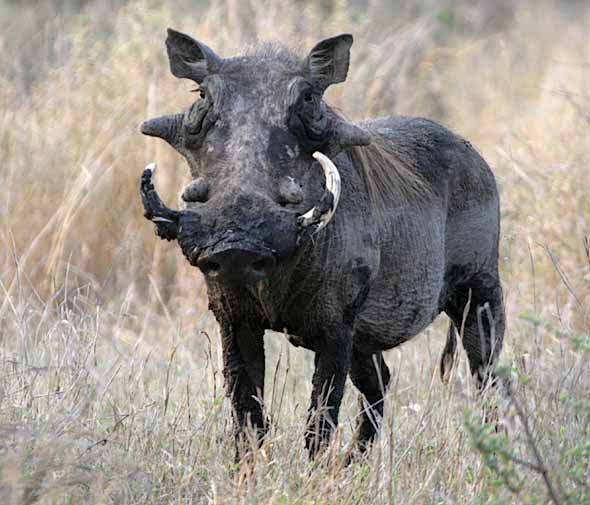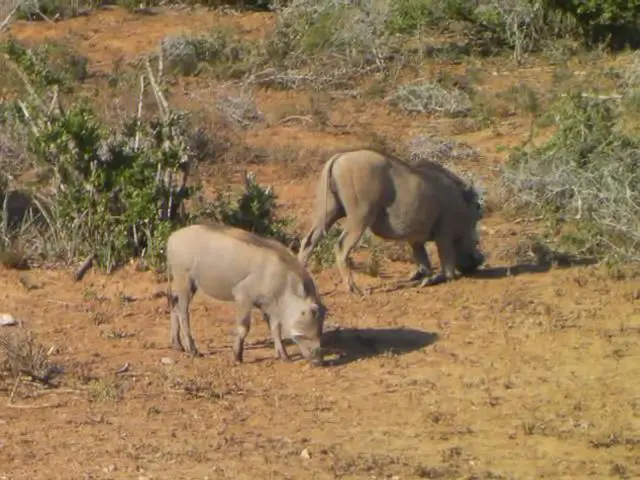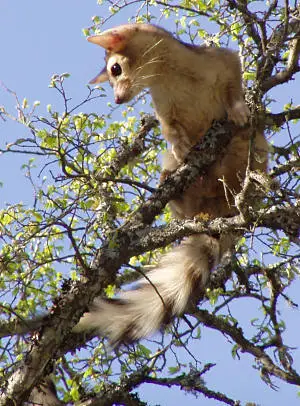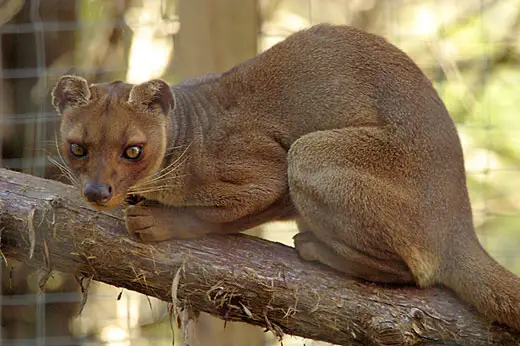Desert Warthog
Because of its distinguishable looks, the Warthog is one of the most peculiar inhabitant of the African savannas. The impressive tusks are a dangerous weapon, which give for the animal’s militant appearance. Desert Warthogs are widespread over open savannas in Western, Central and Eastern Africa. In North Africa they can only be seen in the Sahela region.
The Warthog is 120-150 cm long and up to 80 cm tall, with a total body mass of 70-120 kilograms. Its name comes from growths (warts) on both sides of the upper and the lower jaws. Desert Warthogs also have two pairs of tusks, one of which are smaller, but sharper, while the other two are curved and can be more than 60 cm long. The body itself is woolly, and usually gray or brown. Mane, stretching from the top of their heads to the tail is usually either lighter or darker than rest of the body.
Warthogs are social animals that live in family groups, made of the two parents and their offsprings. Multiple families often merge into a single group, but in these cases each of the families maintains their hierarchy.They usually live in open grasslands near large freshwater sources, which provide with water and cooling. Each family usually finds a cave suited for resting and bringing up the young. Warthogs are famous for their aggressiveness when protecting the family – charging at a speed of 50 km/h and attacking with their impressive tusks can drive away most predators.
They feed mostly on grass and perennial vegetation. Having a rather short neck, compared to the long extremities, the Warthog has to kneel when feeding, for which special pillows grow on their knees. Another important part of their diet is leaves and fruits, as well as a variety of roots and tubers, which the animal digs up from the ground, using the tusks.
When the female is ready for mating, the male becomes increasingly active and circles around the female, emitting loud sounds, similar to motor roaring. A pregnant female leaves the group and finds a cave in which after 171-175 days, two to four piglets are given birth. Warthogs are born rosy and bare. After six weeks they already start feeding on their own and only return to the cave at nights. Their total life expectancy in the wild is unknown, while in captivity Warthogs can live for up to 18 years.
The aggressiveness and speed of this animal has made it very popular to hunt them. Some natives also hunt the animal for its meat and skin. Despite this, Desert Warthogs are not endangered, and they have a strong population both in the wild and in zoos.




